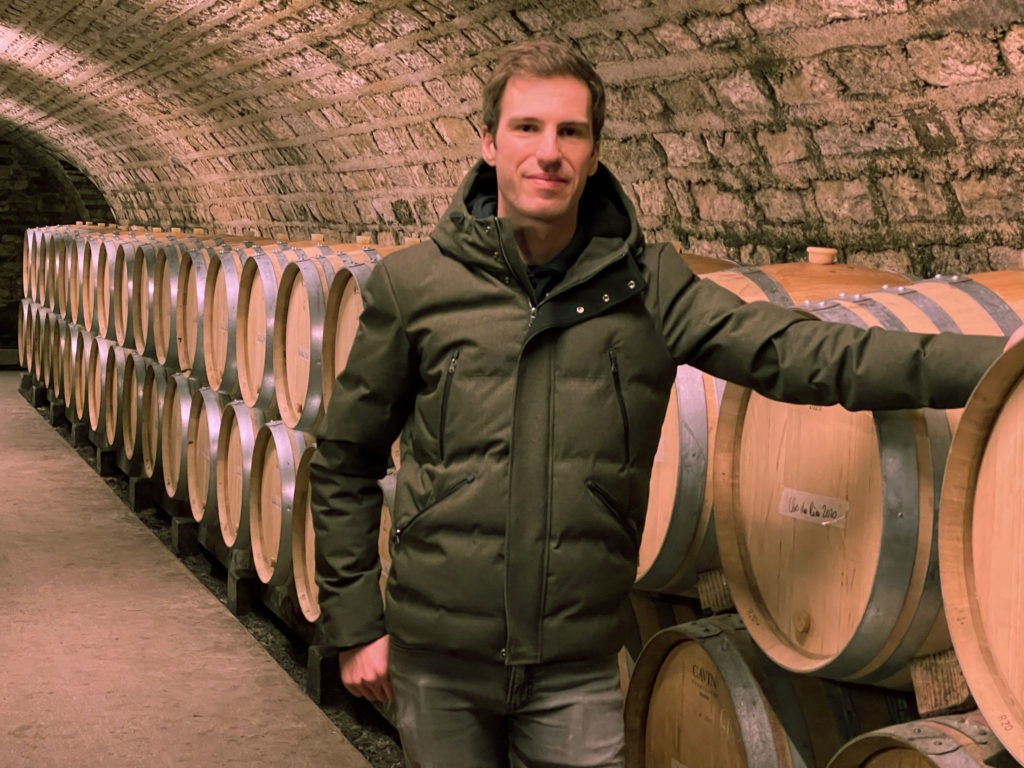When you have tasted Burgundy wines for 30 years, and have enjoyed vintages from 1929 to 2021, you know that there’s a thing you could call “fashion” in Burgundy winemaking, for wont of a better term. It encompasses what is common and popular, and also what is not.
One could say that current fashion in Burgundy is more whole clusters, lower sulphur levels, and less new oak; and this could well be true. But looking around Vosne-Romanée, I see many different styles still being employed. A testament to diversity? A stubborn sticking with what you have always done? Or simply the recipe that just seems to work?

Domaine Michel Gros, now managed by the young Pierre Gros, is a part of the large Gros-family holdings: a group of estates that have never been afraid to stand out. But is their faith in traditional Vosne values weakening?
Let me assure you: Domaine Michel Gros follows the more traditional path. But as always, it takes numerous tastings and some research to understand the details that create the estate’s style.
It is all about the toast and the tonnelier
To be clear, the Michel Gros wines are well made, from appropriate yields. They are Burgundies of good quality, and far better than some other examples on the shelf.
The style is, however, quite distinctive, and this is where opinions divide, as with other distinctively styled producers. Many people do not like the wines of Domaine Prieure Roch, others do. It’s the same with the old Domaine Jayer-Gilles. This is how it is, so let’s be polite and, if not brutally honest, at least take the ‘Hog by the horns.
“As a writer, you should not judge, you should understand.”
Ernest Hemingway
Domaine Michel Gros uses 30% new oak for its village wines, 50% to 60% for the premiers crus, and the grands crus usually see 100% new wood.
While this is at the higher end of the spectrum, it is not unusual in Vosne Romanée, even in 2022. That said, the house style at Domaine Michel Gros is very much determined by the toast of its Rousseau barrels; it uses a strong to very strong toast that does indeed set the style of the wines.
Not many producers still use a strong toast. Still, to be fair in this case, one needs to say strongly toasted Rousseau barrels to be precise about the treatment of the Michel Gros wines. I have experienced stronger oak influence from some of the heavier Francois Freres toasts, and while the strong Rousseau toast is at the top end of the oak scale, it does not get into the very old-school Vosne style where the oak can be disconcertingly dominant.
That being said, the oak does set the style at Domaine Michel Gros. But before we judge too harshly, think of prominent estates like Domaine Bizot and Domaine Comte Liger-Belair which use 100% new oak even for village wines.
And while the oak does stand out at Michel Gos, it is not extreme as at other, even more oak-dominated estates. It does, however, set some guidelines for when to enjoy the wines if oak is not your favourite thing.
The million-dollar question
The wines have qualities that I value from a Vosne producer. Particularly, the Brulees speaks to me, and even the grands crus (Clos Vougeot, with the addition this year of Richebourg and Echézeaux) could be interesting to follow. I do see improvements and potential here, and only time will tell if they please my palate.
Again, many consumers like wines with a strong oak impression. Few Burgundy collectors would refuse the wines from Domaine Bizot, Domaine Comte Liger-Belair, DRC, Leroy – the list goes on. In the end, it is how the oak is used: toast and type, cooper, drying time; some you like, some you love, and in the end, it’s a question of taste and palate.
Tasting the 2020s
We tasted the 2019s first, and then the 2020s. They were different, although the same stylistic expression is maintained.
The 2019s are the better wines, but in reality, the 2020s with their intensity do a very fine job of integrating the oak.
The strong toast requires intensely fruited wines, otherwise the oak enclosure becomes hollow and dominant. And with global warming, Michel Gros now has the ripeness and concentration to make the style work well. I was impressed by the 2020s and their stout intensity.
Domaine Michel Gros Nuits-Saint-Georges 2020
It’s on the dark side, and the toast is ample for my palate. However, the extraction is only moderate, so in the end, it works quite well. That said, the toasty oak and dark Nuits fruit do not release much energy in this wine.
(Drink from 2030) – Good (87p) – Tasted 19/01/2022
You need to login as a Premium subscriber to read the rest of this article. If you are not a Premium Subscriber, use the subscribe function and sign-up.

 - A true vin d’émotion – a Burgundy of passion
- A true vin d’émotion – a Burgundy of passion - A truly hedonistic wine – lively and enjoyable
- A truly hedonistic wine – lively and enjoyable - A vivacious wine for pure indulgance
- A vivacious wine for pure indulgance - A potential vin d´émotion - frais et léger
- A potential vin d´émotion - frais et léger
Leave a Reply
You must be logged in to post a comment.